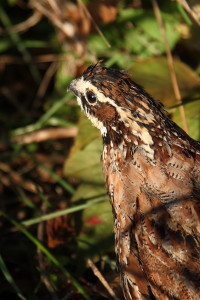BY Kevin Kelly
FRANKFORT, Ky. – The stretch between Christmas and New Year’s Day can be a time to relax, reflect and make resolutions for the year ahead.
The Wildlife Division of the Kentucky Department of Fish and Wildlife Resources is well into its planning for the 2015-16 hunting seasons, and one word keeps coming up in the discussions.
Opportunity.

The focus is not limited to one species, but plans pertaining to deer, elk and small game stand out.
Here’s a look at some of what’s in store for 2015.
DEER
At its December meeting, the Kentucky Fish and Wildlife Commission recommended several proposals for legislative approval that would expand or create new opportunities for deer and elk hunters.
In Kentucky, a county is assigned to one of four deer management zones. Some zones have move liberal harvest restrictions to thin or maintain the herd while others are more restrictive to help grow the herd.
Deer populations in Hopkins, Larue, Green, Nelson and Bullitt counties have reached the point where more antlerless deer need to harvested, according to Kentucky Fish and Wildlife biologists. Under the proposal, those counties would shift from Zone 2 to Zone 1 status. The change would give hunters an opportunity to harvest an unlimited number of antlerless deer in those counties provided they have the appropriate number of Additional Deer Permits.
“You’ll see a significant harvest increase going from a Zone 2 to a Zone 1, which is what we want,” said Chris Garland, acting Wildlife Division director for Kentucky Fish and Wildlife. “When we go to a Zone 1, we’re basically trying to knock back the population.”
Deer numbers in Grayson, Ohio and Breckenridge counties have rebounded since the Epizootic Hemorrhagic Disease outbreaks in 2007 and 2010 and can withstand moving from Zone 3 to Zone 2, biologists said. Zone 2 status allows for a 16-day modern gun deer season as opposed to a 10-day season in Zones 3 and 4.
There are other proposed changes to deer regulations on several Wildlife Management Areas to follow as well, including the creation of a new antlerless-only quota hunt in December on Veterans Memorial WMA in Scott County and a November firearms quota hunt on Kentucky River WMA in Owen and Henry counties. Also, residents 65 and older will be allowed to use crossbows during the entire deer archery season without being required to obtain a crossbow exemption permit under a proposal forwarded by the commission.
“We’re really looking at providing as much opportunity as we can without negatively impacting the population base,” Garland said.
ELK
A new Landowner Voucher Permit System could pave the way for private landowners to earn an elk permit by opening their land for elk hunting.
“We’re trying to increase opportunity by opening up new lands and give people the motivation to open up their private land,” Garland said. “We realize the elk are moving into the woods and moving off the public lands they’ve been hunted on. They’re wiser and more wary and acting like a truly hunted elk herd.”
Under the system recommended by the commission, a landowner or lessee with at least 100 acres in the elk zone would be eligible to enroll.
Landowners would set the number of hunters, by weapon type, allowed on their land. Two points would be awarded for the harvest of a bull elk and one for a cow elk. After accruing 20 points, the landowner or lessee of the property would receive one voucher elk permit, which would be transferrable and valid for either sex on any land the landowner or lessee owns or leases in the elk zone.
SMALL GAME
A progress report on the 10-year plan for restoring the northern bobwhite is due out in early 2015.
“We reviewed our progress over the first five years; what we did well and what we can improve on,” said Ben Robinson, small game biologist with Kentucky Fish and Wildlife.
One of the highlights of the past five years’ work is the success achieved in quail focus areas.
“Every focus area that we worked on experienced an increase in bobwhite populations,” Robinson said. “The work differs a little bit for all the regions, but all in all they’ve been under pretty intensive habitat management. Everything from getting rid of cool season grasses like fescue and establishing native warm-season grasses down to managing existing habitat to make it better through controlled burning, herbicide applications and disking. It’s really starting to pay off.”
Opportunities abound for hunters in Kentucky, and more are on the horizon in 2015. The new license year starts March 1, and licenses and permits for the 2015-16 season are on sale now. Visit the department’s website at fw.ky.gov for more information.
Kevin Kelly is a staff writer for Kentucky Afield magazine, the official publication of the Kentucky Department of Fish and Wildlife Resources. Get the latest from Kevin and the entire Kentucky Afield staff by following them on Twitter: @kyafield.
-30-
The Kentucky Department of Fish and Wildlife Resources manages, regulates, enforces and promotes responsible use of all fish and wildlife species, their habitats, public wildlife areas and waterways for the benefit of those resources and for public enjoyment. Kentucky Fish and Wildlife is an agency of the Tourism, Arts and Heritage Cabinet. For more information on the department, visit our website at fw.ky.gov.


Be the first to comment